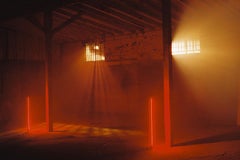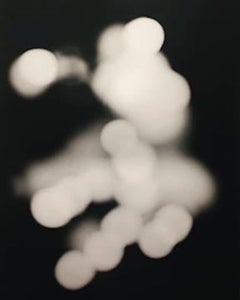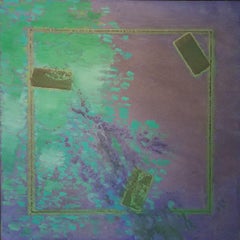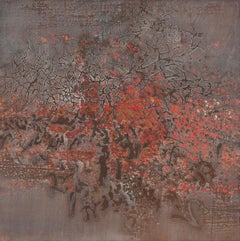Gyorgy Kepes Art
to
3
9
9
8
1
1
1
1
Eyes, Chicago by György Kepes, 1940, Silver Gelatin Print, Photography
By György Kepes
Located in Denton, TX
Untitled #42 (Eyes, Chicago), by György Kepes is a 4 1/2 x 3 5/8 inch gelatin silver print mounted on 16 1/4 x 13 1/4 inch paper. This photograph is signed and dated in pencil on mou...
Category
Mid-20th Century Modern Gyorgy Kepes Art
Materials
Silver Gelatin
$1,800 Sale Price
21% Off
Juliet with One Peacock Feather Eye, Chicago
By György Kepes
Located in Denton, TX
Signed, dated and numbered.
Portfolio Twelve Photographs, No. 13
György Kepes was a Hungarian artist born in 1906. He studied painting at the Budapest’s Academy of Fine Arts. In 193...
Category
1930s Bauhaus Gyorgy Kepes Art
Materials
Silver Gelatin
$1,800 Sale Price
40% Off
Fluid Patterns
By György Kepes
Located in Denton, TX
Signed, dated and numbered.
Portfolio "Twelve Photographs", No. 13
György Kepes was a Hungarian artist born in 1906. He studied painting at Budapest’s Academy of Fine Arts. In 1937,...
Category
1940s Bauhaus Gyorgy Kepes Art
Materials
Silver Gelatin
$1,800 Sale Price
28% Off
Vintage Large Format Avant Garde Polaroid 20X24 Photograph
By György Kepes
Located in Surfside, FL
Sorry for the reflection on the plexi. In the early 1980s, the Polaroid Foundation invited Hungarian-born painter and photographer György Kepes (1906-2001) to use the 20x24 Polaroid camera. The resulting carefully staged compositions summarize many of his artistic concerns, employing such objects as prisms, flowers, and graphic papers to manipulate the effects of light and form.
György Kepes 1906-2001 was a Hungarian-born painter, photographer, designer, educator, and art theorist. After emigrating to the U.S. in 1937, he taught design at the New Bauhaus (later the School of Design, then Institute of Design, then Illinois Institute of Design or IIT) in Chicago. In 1967 He founded the Center for Advanced Visual Studies at the Massachusetts Institute of Technology (MIT) where he taught until his retirement in 1974. Kepes was born in Selyp, Hungary. His younger brother was Imre Kepes, ambassador in Argentina, father of András Kepes journalist, documentary filmmaker and author. At age 18, he enrolled at the Royal Academy of Fine Arts in Budapest, where he studied for four years with Istvan Csok, a Hungarian impressionist painter. In the same period, he was also influenced by the socialist avant-garde poet and painter Lajos Kassak.
Kepes gave up painting temporarily and turned instead to filmmaking. In 1930, he settled in Berlin, where he worked as a publication, exhibition and stage designer. Around this time, he designed the dust jacket for Gestalt psychologist Rudolf Arnheim's famous book, Film als Kunst (Film as Art), one of the first published books on film theory. In Berlin, he was also invited to join the design studio of Laszlo Moholy-Nagy, the Hungarian photographer who had taught at the Dessau Bauhaus. When, in 1936, Moholy relocated his design studio to London, Kepes joined him there as well.
Kepes was lured to Brooklyn College by Russian-born architect Serge Chermayeff, who had been appointed chair of the Art Department in 1942. There he taught graphic artists such as Saul Bass.
In 1944, he published Language of Vision, an influential book about design and design education. In part, the book was important because it predated three other influential texts on the same subject: Paul Rand, Thoughts on Design (1946), László Moholy-Nagy, Vision in Motion (1947), and Rudolf Arnheim, Art and Visual Perception (1954).
In 1947, Kepes accepted an invitation from the School of Architecture and Planning at MIT to initiate a program there in visual design, a division that later became the Center for Advanced Visual Studies (c1968). Some of the Center's early fellows included artists Otto Piene, Vassilakis Takis, Jack Burnham, Wen-Ying Tsai, Stan Vanderbeek, Maryanne Amacher, Joan Brigham, Lowry Burgess, Peter Campus, Muriel Cooper, Douglas Davis, Susan Gamble, Dieter Jung, Piotr Kowalski, Charlotte Moorman, Antoni Muntadas, Yvonne Rainer, Keiko Prince, Alan Sonfist, Aldo Tambellini, Joe Davis, Bill Seaman, Tamiko Thiel, Alejandro Sina, Don Ritter, Luc Courchesne, and Bill Parker...
Category
1980s Conceptual Gyorgy Kepes Art
Materials
Polaroid
Still Life with Shapes
By György Kepes
Located in Astoria, NY
Gyorgy Kepes (Hungarian-born/American, 1906-2001), Still Life with Shapes, Gelatin Silver Print, 1940, likely printed later, apparently unsigned, silvered wood frame. Image: 8.5" H x...
Category
Mid-20th Century Abstract Gyorgy Kepes Art
Materials
Silver Gelatin
Untitled [Abstract Composition]
By György Kepes
Located in Astoria, NY
Gyorgy Kepes (Hungarian-born/American, 1906-2001), Untitled [Abstract Composition], Gelatin Silver Print, 1938, likely printed later, apparently unsigned, silvered wood frame. Image:...
Category
Mid-20th Century Abstract Gyorgy Kepes Art
Materials
Silver Gelatin
"Magnetic Fields"
By György Kepes
Located in Astoria, NY
Gyorgy Kepes (Hungarian-born/American, 1906-2001), "Magnetic Fields", Gelatin Silver Print, 1938, likely printed later, apparently unsigned, silvered wood frame. Image: 8" H x 6" W; ...
Category
Mid-20th Century Abstract Gyorgy Kepes Art
Materials
Silver Gelatin
"Juliet in Camouflage Jungle"
By György Kepes
Located in Astoria, NY
Gyorgy Kepes (Hungarian-born/American, 1906-2001), "Juliet in Camouflage Jungle", Gelatin Silver Print, 1942, likely printed later, apparently unsigned, silvered wood frame. Image: 6...
Category
Mid-20th Century Abstract Gyorgy Kepes Art
Materials
Silver Gelatin
Untitled [abstract shapes]
By György Kepes
Located in Astoria, NY
Gyorgy Kepes (Hungarian-born/American, 1906-2001), Untitled [abstract shapes], Gelatin Silver Print, 1941, likely printed later, apparently unsigned, silvered wood frame. Image: 8" H...
Category
Mid-20th Century Abstract Gyorgy Kepes Art
Materials
Silver Gelatin
Related Items
"Starburst" Photography 24" x 36" inch Edition 1/15 by Larsen Sotelo
By Larsen Sotelo
Located in Culver City, CA
"Starburst" Photography 24" x 36" inch Edition 1/15 by Larsen Sotelo
Not framed. Ships in tube
Giclee (Archival Ink) print on 310G Platine Fibre Cotton Rag w/satin finish
Shot wi...
Category
21st Century and Contemporary Contemporary Gyorgy Kepes Art
Materials
Archival Ink, Rag Paper, Giclée
$1,750
H 24 in W 36 in D 0.1 in
Black and White Photograph, Abstract, Geometric, Framed, 2020
Located in San Francisco, CA
This black and white abstract photograph is unique. Betsy Kenyon works in a darkroom with light and shapes. There is no negative, making each artwork one ...
Category
2010s Abstract Geometric Gyorgy Kepes Art
Materials
Silver Gelatin, Photogram
$3,360 Sale Price
20% Off
H 36.5 in W 24.5 in
"How to Create a Beautiful Picture 6: Tights in Shimotakaido" – Daido Moriyama
By Daido Moriyama
Located in Zurich, CH
DAIDO MORIYAMA (*1938, Japan)
"How to Create a Beautiful Picture 6: Tights in Shimotakaido"
1987/2021
Silver gelatin print, later print
Sheet 34 x 26.5 cm (13 3/8 x 10 3/8 in.)
not p...
Category
1980s Contemporary Gyorgy Kepes Art
Materials
Silver Gelatin
$6,299
H 13.39 in W 10.44 in
Shadows and Marbles, Cushing, ME Vintage Print
By Paul Caponigro
Located in Carmel, CA
Gelatin Silver Print, signed, titled, and dated on verso in pencil.
Great Condition.
Matted to 16x20"
Category
2010s Abstract Gyorgy Kepes Art
Materials
Silver Gelatin
$2,000 Sale Price
33% Off
H 8 in W 10 in
Female Nude in Yoga Pose, Black and White Photograph of Woman, Kate #10
By Leonard Freed
Located in New york, NY
Kate #10, 2002 by Leonard Freed is an 8" x 10" hand printed. Signed by the photographer black and white photograph, stamped "vintage" by the Freed estate. Model and yogini Kate remai...
Category
Early 2000s Contemporary Gyorgy Kepes Art
Materials
Silver Gelatin, Photographic Film, Photographic Paper
Daniel Craig Contact Sheet (Limited Edition of 25) - Celebrity Photography
Located in New York, NY
This is a 2002 contact sheet (a positive print of all the negative images from a roll of 35mm film or medium format film) of youthful-looking Daniel Craig...
Category
Early 2000s Contemporary Gyorgy Kepes Art
Materials
Silver Gelatin
$1,632 Sale Price
20% Off
H 20 in W 24 in
Photographs 1960–2024. Book & signed Gelatin silver print ‘Untitled, Elba, 1980'
By Ralph Gibson
Located in Los Angeles, CA
Limited Art Edition (No. 1–100), with the gelatin silver print Untitled (Elba, 1980), numbered and signed by Ralph Gibson.
Edition of 100.
Gelatin silver print, 11 x 14 in., in portf...
Category
Late 20th Century Abstract Gyorgy Kepes Art
Materials
Silver Gelatin
"The Glimmer Twins - Keith Richards" Photography 20x15 in by Charlie Auringer
Located in Culver City, CA
"The Glimmer Twins - Keith Richards" Photography 20x15 in by Charlie Auringer
Year: 1978
Edition of 50
Medium: Silver gelatin limited edition photographic print on paper
Signed and ...
Category
20th Century Contemporary Gyorgy Kepes Art
Materials
Silver Gelatin
Daniel Craig (Limited Edition of 25), 30x30 In - Celebrity Photography
Located in New York, NY
Daniel Craig, photographed in 2002 by British celebrity and fashion photographer, John Stoddart, prior to Craigs casting as 007, James Bond. Craig was th...
Category
21st Century and Contemporary Contemporary Gyorgy Kepes Art
Materials
Silver Gelatin
$3,264 Sale Price
20% Off
H 30 in W 30 in
"How to Create a Beautiful Picture 6: Tights in Shimotakaido" – Daido Moriyama
By Daido Moriyama
Located in Zurich, CH
DAIDO MORIYAMA (*1938, Japan)
"How to Create a Beautiful Picture 6: Tights in Shimotakaido"
1987
Silver gelatin print
Sheet 25.4 x 30.5 cm (12 x 12 in.)
Frame 44 x 50.5 x 3 cm (17 3/...
Category
1980s Contemporary Gyorgy Kepes Art
Materials
Silver Gelatin
$6,299
H 10.01 in W 12.01 in
Moon Over (After Ansel Adams), Abstract Black & White Photo by Bill Clark
By Bill Clark
Located in Soquel, CA
"Moon Over", an abstract black & white photograph after Ansel Adams by Bill Clark (American, 20th Century). Signed "Bill Clark" and dated "1996" lower right. Titled "Moon Over" lower...
Category
1990s Abstract Expressionist Gyorgy Kepes Art
Materials
Photographic Paper, Silver Gelatin
$899
H 29.5 in W 27.5 in D 0.15 in
The Swan, With Leda (Limited Edition of 25) - 30x40 In Fine Art Print
Located in New York, NY
This 2009 photograph by legend photographer, John Stoddart depicts “The Swan with Leda.” It was inspired from the mythology of the Greek story of Leda and the Swan, when the God Zeus...
Category
Early 2000s Conceptual Gyorgy Kepes Art
Materials
Silver Gelatin
Previously Available Items
Gyorgy Kepes Green & Purple Geometric Abstraction New Bauhaus Mid-century Modern
By György Kepes
Located in New York, NY
Gyorgy Kepes (1906 - 2001)
Untitled
Mixed media on canvas
48 x 48 inches
Kepes was born in Selyp, Hungary. His younger brother was Imre Kepes, ambassador in Argentina, father of András Kepes, a journalist, documentary filmmaker and author. At age 18, he enrolled at the Royal Academy of Fine Arts in Budapest, where he studied for four years with Istvan Csok, a Hungarian impressionist painter. In the same period, he was also influenced by the socialist avant-garde poet and painter Lajos Kassak, and began to search for means by which he could contribute to the alleviation of social injustice, especially (as he later recalled) "the inhumane conditions of the Hungarian peasantry."
Kepes gave up painting temporarily and turned instead to filmmaking. In 1930, he settled in Berlin, where he worked as a publication, exhibition and stage designer. Around this time, he designed the dust jacket for Gestalt psychologist Rudolf Arnheim's famous book, Film als Kunst (Film as Art), one of the first published books on film theory. In Berlin, he was also invited to join the design studio of László Moholy-Nagy, the Hungarian photographer who had taught at the Dessau Bauhaus. When, in 1936, Moholy relocated his design studio to London, Kepes joined him there as well.
A fortunate consequence of moving to London was that Kepes found his future wife, a 17-year-old British woman née Juliet Appleby, an artist and illustrator. By chance, he saw her on the street, introduced himself, and soon the two began to date. The following year, when Moholy agreed to become the director of a new art school in Chicago (which Moholy dubbed the New Bauhaus), Kepes was invited to join the faculty and to head a curricular area in Light and Color. Kepes asked Juliet to join him. While teaching at the Institute of Design (or New Bauhaus) from 1937 to 1943, Kepes enlarged and refined his ideas about design theory, form in relation to function, and (his own term) the "education of vision." Kepes was lured to Brooklyn College by Russian-born architect Serge Chermayeff, who had been appointed chair of the Art Department in 1942. There he taught graphic artists such as Saul Bass.
In 1944, he published Language of Vision, an influential book about design and design education. Widely used for many years as a college textbook (it had thirteen printings, in four languages), it began by acknowledging Kepes' indebtedness to the Berlin-based Gestalt psychologists, and by asserting that "Visual communication is universal and international; it knows no limits of tongue, vocabulary, or grammar, and it can be perceived by the illiterate as well as by the literate…[The visual arts, as] the optimum forms of the language of vision, are, therefore, an invaluable educational medium". In part, the book was important because it predated three other influential texts on the same subject: Paul Rand, Thoughts on Design (1946), László Moholy-Nagy, Vision in Motion (1947), and Rudolf Arnheim, Art and Visual Perception (1954).
In 1942, Kepes had been one of a number of people (Moholy was another) who were asked by the U.S. Army to offer advice on military and civilian urban camouflage, in the course of which he viewed Chicago from the air. He alluded to this experience in Language of Vision, when he talked about natural camouflage: "The numerous optical devices which nature employs in the animal world to conceal animals from their enemies reveal the workings of this law [i.e., perceptual grouping] of visual organization".
In 1947, Kepes accepted an invitation from the School of Architecture and Planning at MIT to initiate a program there in visual design, a division that later became the Center for Advanced Visual Studies (c1968). Some of the Center's early fellows included artists Otto Piene, Panayiotis Vassilakis, Jack Burnham, Wen-Ying Tsai, Stan Vanderbeek, Maryanne Amacher, Joan Brigham, Lowry Burgess, Peter Campus, Muriel Cooper, Douglas Davis, Susan Gamble, Dieter Jung, Piotr Kowalski, Charlotte Moorman, Antoni Muntadas, Yvonne Rainer, Keiko Prince, Alan Sonfist, Aldo Tambellini, Joe Davis, Bill Seaman, Tamiko Thiel, Alejandro Sina, Don Ritter, Luc Courchesne, and Bill Parker.
While teaching at MIT (where he remained until his retirement in 1974), Kepes was in contact with a wide assortment of artists, designers, architects and scientists, among them Norbert Wiener, Buckminster Fuller, Rudolf Arnheim, Marcel Breuer, Charles Eames, Erik Erikson...
Category
Mid-20th Century Bauhaus Gyorgy Kepes Art
Materials
Canvas, Mixed Media
Nature Hieroglyph
By György Kepes
Located in Dallas, TX
oil and sand on canvas
signed "Gyorgy Kepes / Nature Hieroglyph / 1958" on verso
Category
1950s Modern Gyorgy Kepes Art
Materials
Canvas, Oil
Untitled #32
By György Kepes
Located in New York, NY
Gelatin silver print
Signed and dated in pencil, verso
10 x 8.125 inches, sheet
9.75 x 6.75 inches, image
This photograph is offered by ClampArt, located in New York City.
About the...
Category
1930s Modern Gyorgy Kepes Art
Materials
Silver Gelatin
Glow, 1974
By György Kepes
Located in Wilton Manors, FL
Gyorgy Kepes (1906-2002). Glow, 1974. Oil and sand on canvas, 48 x 60 inches; 50 x 62 inches in custom 22K gold leaf float frame. Excellent condition with no damage or conservation. ...
Category
1970s Abstract Expressionist Gyorgy Kepes Art
Materials
Canvas, Oil
Vintage Large Format Avant Garde Polaroid 20X24 Photograph
By György Kepes
Located in Surfside, FL
Sorry for the reflection on the plexi. In the early 1980s, the Polaroid Foundation invited Hungarian-born painter and photographer György Kepes (1906-2001) to use the 20x24 Polaroid camera. The resulting carefully staged compositions summarize many of his artistic concerns, employing such objects as prisms, flowers, and graphic papers to manipulate the effects of light and form.
György Kepes 1906-2001 was a Hungarian-born painter, photographer, designer, educator, and art theorist. After emigrating to the U.S. in 1937, he taught design at the New Bauhaus (later the School of Design, then Institute of Design, then Illinois Institute of Design or IIT) in Chicago. In 1967 He founded the Center for Advanced Visual Studies at the Massachusetts Institute of Technology (MIT) where he taught until his retirement in 1974. Kepes was born in Selyp, Hungary. His younger brother was Imre Kepes, ambassador in Argentina, father of András Kepes journalist, documentary filmmaker and author. At age 18, he enrolled at the Royal Academy of Fine Arts in Budapest, where he studied for four years with Istvan Csok, a Hungarian impressionist painter. In the same period, he was also influenced by the socialist avant-garde poet and painter Lajos Kassak.
Kepes gave up painting temporarily and turned instead to filmmaking. In 1930, he settled in Berlin, where he worked as a publication, exhibition and stage designer. Around this time, he designed the dust jacket for Gestalt psychologist Rudolf Arnheim's famous book, Film als Kunst (Film as Art), one of the first published books on film theory. In Berlin, he was also invited to join the design studio of Laszlo Moholy-Nagy, the Hungarian photographer who had taught at the Dessau Bauhaus. When, in 1936, Moholy relocated his design studio to London, Kepes joined him there as well.
Kepes was lured to Brooklyn College by Russian-born architect Serge Chermayeff, who had been appointed chair of the Art Department in 1942. There he taught graphic artists such as Saul Bass.
In 1944, he published Language of Vision, an influential book about design and design education. In part, the book was important because it predated three other influential texts on the same subject: Paul Rand, Thoughts on Design (1946), László Moholy-Nagy, Vision in Motion (1947), and Rudolf Arnheim, Art and Visual Perception (1954).
In 1947, Kepes accepted an invitation from the School of Architecture and Planning at MIT to initiate a program there in visual design, a division that later became the Center for Advanced Visual Studies (c1968). Some of the Center's early fellows included artists Otto Piene, Vassilakis Takis, Jack Burnham, Wen-Ying Tsai, Stan Vanderbeek, Maryanne Amacher, Joan Brigham, Lowry Burgess, Peter Campus, Muriel Cooper, Douglas Davis, Susan Gamble, Dieter Jung, Piotr Kowalski, Charlotte Moorman, Antoni Muntadas, Yvonne Rainer, Keiko Prince, Alan Sonfist, Aldo Tambellini, Joe Davis, Bill Seaman, Tamiko Thiel, Alejandro Sina, Don Ritter, Luc Courchesne, and Bill Parker.
While teaching at MIT Kepes was in contact with a wide assortment of artists, designers, architects and scientists, among them Norbert Wiener, Buckminster Fuller, Rudolf Arnheim, Marcel Breuer, Charles Eames, Erik Erikson...
Category
1980s Conceptual Gyorgy Kepes Art
Materials
Polaroid
Eyes, Chicago
By György Kepes
Located in Denton, TX
Signed, dated and numbered.
Portfolio "Twelve Photographs," No. 13
Category
Mid-20th Century Modern Gyorgy Kepes Art
Materials
Silver Gelatin
Untitled
By György Kepes
Located in Wilton Manors, FL
Gyorgy Kepes (1906-2001). Oil, sand and collage on canvas measures 6 x 8 inches; 10 x 12 inches framed. Painting is in excellent condition with no damage or restoration. Signed lower left. Frame has minor water stain on linen, lower right.
Kepes was born in Hungry in 1906. He was not only a painter but also a filmmaker and a writer. Kepes studied at the Royal Academy of Fine Arts in Budapest where he studied painting under Istvan Csok during the 1920's. Kepes was invited to join the design studio of Hungarian photographer Laszo Mohonly-Nagy in Berlin. He then followed Mohonly to London in 1936. It was in London that Kepes met his wife, artist and illustrator, Juliet Appleby. In 1937, he emigrated to the United States.
Teaching:
New Bauhaus in Chicago / late 1937-1943 teaching design
Brooklyn College / 1942 teaching graphic art
School of Architecture and Planning at Massachusetts Institute of Technology / 1947 teaching visual design
Founder of Center for Advanced Visual Studies at MIT / 1967-1974
While teaching at MIT, Kepes' art became abstract. This lead him to pursue an art style known as "new scientific imagery." Kepes continued to teach at MIT until his retirement in 1974. Kepes made numerous pieces in connection to lighting. The first programmable lightwall made by an artist in 1949 on the elevation of Radio Shack in Boston; the kinetic lightwall of the KLM headquarters carried out in 1959; New York Times Square's kinetic wall; Cambridge Harvard Square subway station. His lighting artwork is presented in numerous places including Chicago and San Francisco.
Solo Exhibitions:
2012 Paintings & Photographs 1940s - 1980s - Alpha Gallery, Boston, MA
2008 The art of the light - MODEM Centre for Modern and Contemporary Arts, Debrecen
1984 Light Graphics - ICP - International Center of Photography, New York City, NY
1978 Kepes at the Henry - Henry Art Gallery, Seattle, WA
1958...
Category
1960s Abstract Expressionist Gyorgy Kepes Art
Materials
Oil
Framed Gyorgy Kepes Photograph
By György Kepes
Located in Pawtucket, RI
Provocative surrealist image by Hungarian artist Gyorgy Kepes. Kepes was a principal at The New Bauhaus with Laszlo Moholy-Nagy in Chicago and founded the Center for Advanced Visual ...
Category
1940s Vintage Gyorgy Kepes Art
Materials
Glass, Paper
Gyorgy Kepes art for sale on 1stDibs.
Find a wide variety of authentic Gyorgy Kepes art available for sale on 1stDibs. You can also browse by medium to find art by Gyorgy Kepes in silver gelatin print, polaroid and more. Much of the original work by this artist or collective was created during the 20th century and is mostly associated with the modern style. Not every interior allows for large Gyorgy Kepes art, so small editions measuring 4 inches across are available. Customers who are interested in this artist might also find the work of and Ida Lansky. Gyorgy Kepes art prices can differ depending upon medium, time period and other attributes. On 1stDibs, the price for these items starts at $2,500 and tops out at $4,500, while the average work can sell for $2,700.
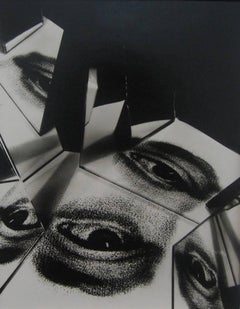
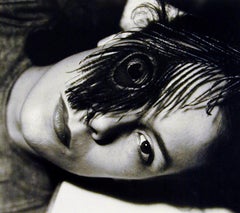
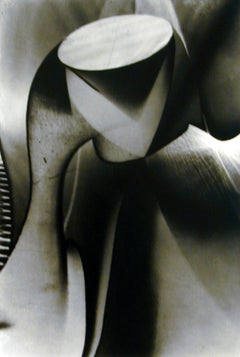
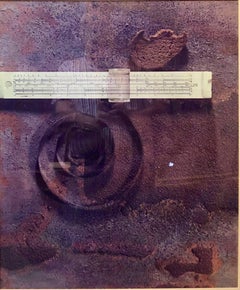
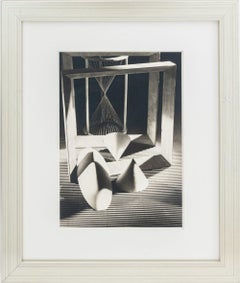
![György Kepes - Untitled [Abstract Composition] Untitled [Abstract Composition]](https://a.1stdibscdn.com/gyorgy-kepes-photography-untitled-abstract-composition-for-sale/a_28452/1759327394580/122016_1_master.jpg?width=240)
